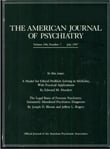In this era of managed care, practice guidelines, and DSM-IV, it is important to recognize the tremendous contributions of psychoanalysis to our understanding of the individual and how a personal relationship that is intensive and long-term can lead to change and growth.
Psychoanalysis is that most wonderful invention of the twentieth century, which serves as the antidote to a time in our history marked by genocide, war, and mass social upheaval. These antihuman themes of the century are in marked contrast to the interaction and interconnection of one individual with another in the therapeutic frame of psychoanalysis.
The Therapeutic Alliance asks the fundamental question, “How does the psychoanalytic process help in the alleviation of symptoms and promotion of emotional growth?” The relationship between analyst and patient is both real and imagined, correct and projective; it is the matrix in which enduring change occurs. This book is about that interaction and is a contribution to the nature of this shared experience of how, in the context of a trusting relationship, a therapeutic alliance creates the opportunity for true emotional healing.
Dr. Meissner distinguishes issues of transference and countertransference, the real relationship from therapeutic alliance. In great detail he reviews the voluminous literature on ego psychology and posits how the alliance between therapist and patient can lead to a modification of psychological “inner structures.” One wonders how this might modify biological structures as well.
This book is a synthesis of the ideas and thoughts of many serious thinkers on the topic—from Freud, whose insistence on the patient being a collaborator, to Semrad, who taught that a focus on the healthy part of the individual would lead to the natural processes of emotional growth in the context of therapy.
Of interest to therapists of all persuasions, this book discusses in great detail the rationale for clear boundaries in the therapist-patient relationship, the need for strict confidentiality, and some of the problems that occur as we ask for more information to be accountable to the payers and their managed care agents. Violations of these boundaries are simultaneously a clinical and ethical crisis for the field as a whole.
Indeed, one question that emerges from this text is whether managed care intrusions disrupt the therapeutic frame and the therapeutic alliance to the extent that it is not possible to use third-party payments and remain true to the necessary work. Perhaps that is a hidden agenda of third-party reviews (to disrupt care and save money), but it creates the inevitable conclusion that one must be able to pay out of pocket to retain the trust and confidentiality necessary for the therapeutic alliance to work.
This book is wonderful reading. As I read it, I recalled my own psychoanalyst saying to me, “Let's study this together.” Whatever the intensity of emotional distress, deep memories, or specific feelings, my analysis was a collaboration and an adventure. It was curative, and I learned so much about myself and others.

